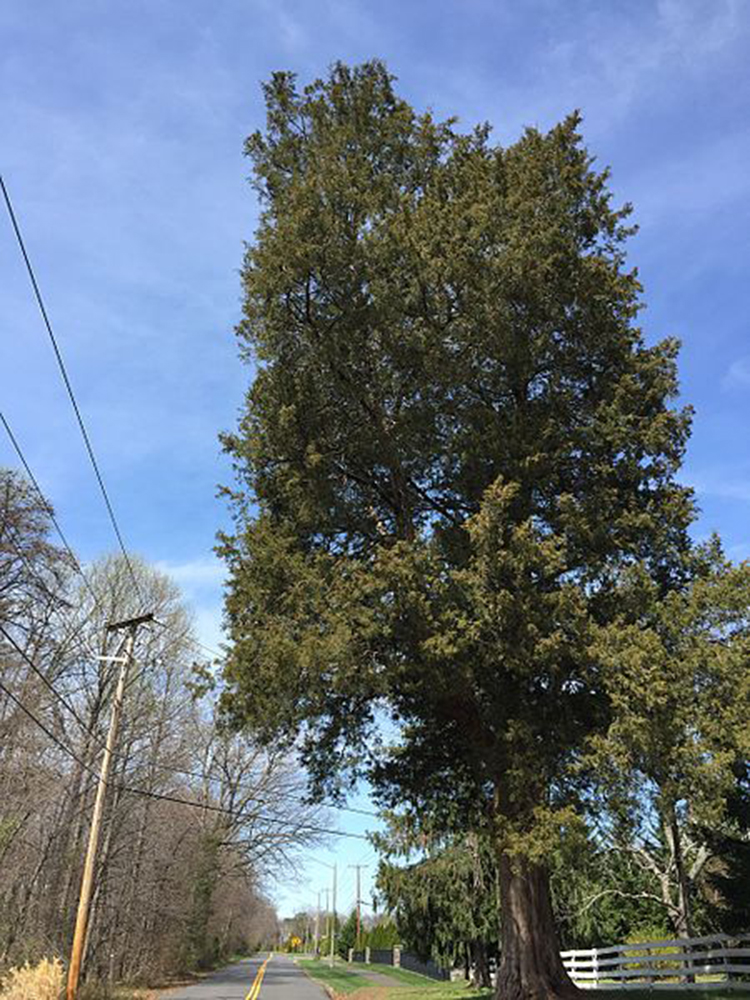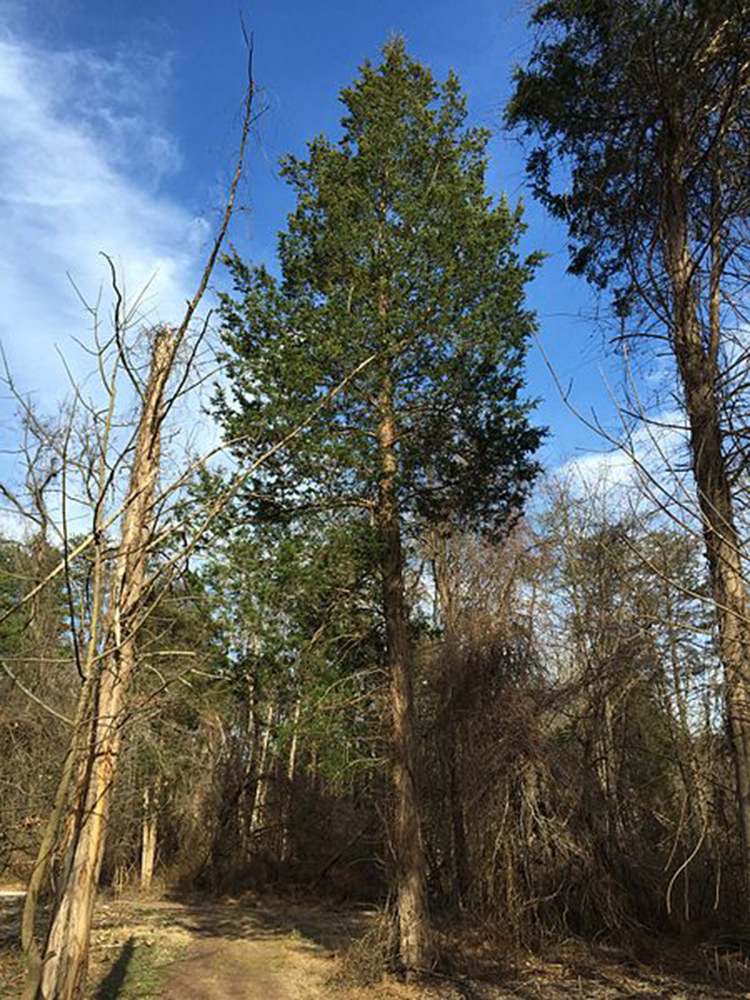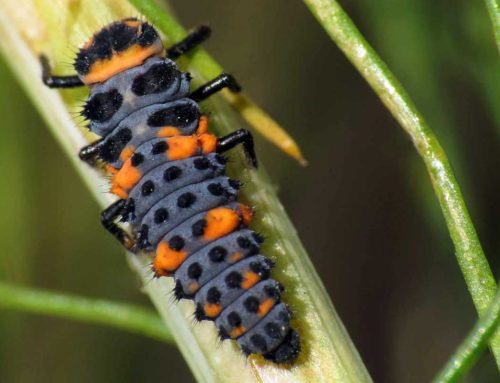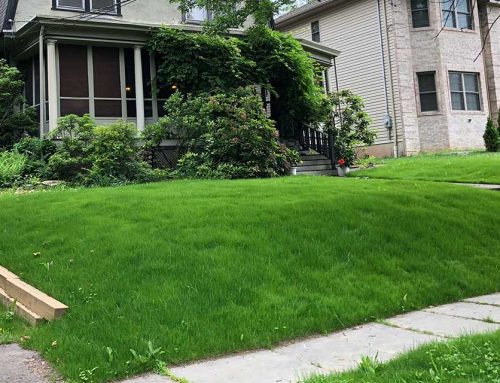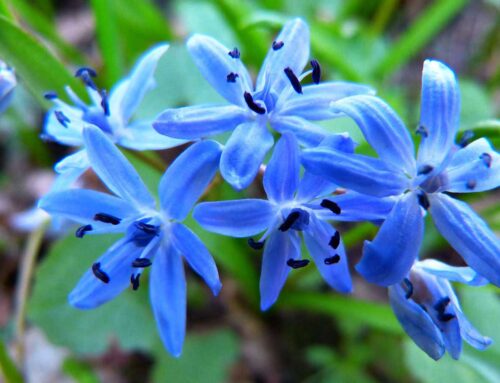Juniperus virginiana
(Eastern Redcedar)
Sustainable Landscaping with Native Plants
With Arbor Day on the approach, there is no better time to start looking for native trees and shrubs to plant to improve your property and give you all the benefits that come with trees and shrubs. Planting trees each arbor day can have a positive effect on the environment and can be a fun, simple, learning experience if you have never planted a tree. If you’re searching for a tree to plant this Arbor Day, search no more, as the Eastern Redcedar is a great shade loving cone shaped tree that is native to the East coast and provide your yard with aromatic needles.
This evergreen, native to eastern North America, grows in U.S. Department of Agriculture plant hardiness zones 2 through 9, reaching 40 to 50 feet tall. It puts on about 24 inches of new growth each year and lives more than 150 years. The tree is available in bare root form during the early spring. It is also known as juniper, savin evergreen, cedar apple and Virginia red cedar. The bark is grayish to reddish-brown. The foliage green and needlelike. Female and male cones are borne on separate trees.
Eastern red cedar produces green flowers if the tree is female and yellow blossoms if the tree is male. It blooms late in the winter. Quarter-inch-round bluish cones that resemble berries replace the blossoms. Thuja plicata, on the other hand, develops unremarkable flowers on the tips of its branches, followed by 1/2-inch green, scaly, woody, oval-shaped cones that mature to tan or brown.
Both Eastern and Western red cedars are available in cultivars, or cultivated varieties. The varieties of this tree differ in their foliage color as well as size. “Grey Owl,” for example, grows around 18 feet tall with a 3- to 6-foot spread, and yields silvery-blue foliage with a fine texture. While the foliage on “Emerald Sentinel,” a female Eastern red cedar cultivar, usually keeps its dark green color throughout the winter months. It reaches heights of approximately 20 feet, with an 8-foot canopy.
These trees are quite tolerant of a wide range of conditions after it has been established. However, cedar-apple rust may affect Eastern red cedars, while bagworms attack the tree too.
Importance
Eastern red cedar tree is important food and shelter for wildlife both large and small. The juicy bluish-black berries provide winter food for many kinds of wildlife and songbirds, including the Cedar waxwing, named for this tree. The twigs and foliage are eaten extensively by hoofed browsers. In addition to their value as food for wildlife, cedars provide important protective and nesting cover. The trees are widely used in shelterbelts and wildlife plantings. Pheasants, doves, robins, song sparrows, and mockingbirds use these trees for nesting. Warbles, myrtles, various sparrows and other birds use the dense foliage as roosting cover. In winter, their dense protective shelter is especially valuable, particularly in deciduous forest areas.
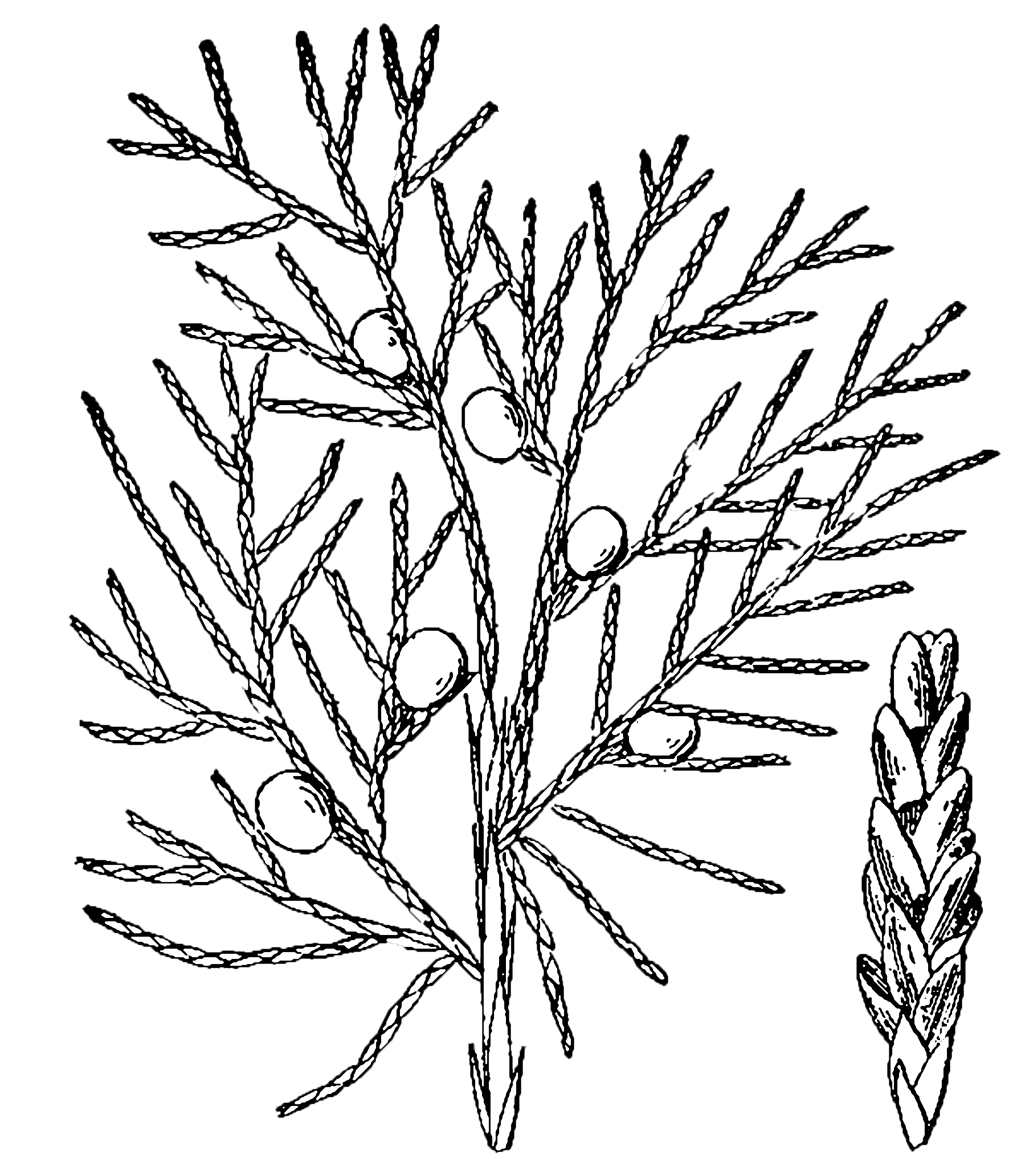 Aside from it’s great appearance, Native Americans had also used the red cedar for incense or to burn during purification rites. Known as the “Tree of Life”, the Eastern red cedar was and still is used in ceremonies. Regarded as a holy tree, it has often been burned in purification rituals and sweat lodges. When burned, cedar acts as a purifier, cleansing the area in which it is burned and emitting a pleasant scent. The wood from the tree is considered especially sacred, holding power, it is very much alive spiritually. It’s interesting to learn that a number of tribes include cedar as one of the four sacred medicines, which are cedar, sage, tobacco and sweet grass.
Aside from it’s great appearance, Native Americans had also used the red cedar for incense or to burn during purification rites. Known as the “Tree of Life”, the Eastern red cedar was and still is used in ceremonies. Regarded as a holy tree, it has often been burned in purification rituals and sweat lodges. When burned, cedar acts as a purifier, cleansing the area in which it is burned and emitting a pleasant scent. The wood from the tree is considered especially sacred, holding power, it is very much alive spiritually. It’s interesting to learn that a number of tribes include cedar as one of the four sacred medicines, which are cedar, sage, tobacco and sweet grass.
The Blackfeet made a berry tea of the red cedar to combat vomiting. They also boiled the leaves in water and mixed the resulting brew with turpentine which was then rubbed on the body to soothe rheumatism and arthritis. The Cheyenne steeped the leaves and drank the tea to calm coughs or throat problems. A tea was also used to hasten childbirth. Other Native Americans used the eastern red cedar for everything from asthma, colds, diarrhea, fevers, tonsillitis and pneumonia.
Juniperus virginiana is also the host plant for the Juniper hairstreak butterfly, Callophrys gryneus. These mint green to copper-brownish butterflies are a widespread species found across much of the United States. They seek out the juniper for larval food and laying their eggs, which can be found at the tips of the leaves. Males are highly territorial on cedar trees, where they perch in search of females.
Planting
Eastern redcedars can be planted by seeds or from cuttings, however, the seeding method will take much longer to germinate.
To plant this behemoth of a tree, start by removing the weeds, grass and debris from a planting site located in full to partial sun. Plant eastern red cedars in moist to dry soil, since this tree does not tolerate waterlogged soil. Examine the roots, and trim away any damaged or excessively long roots with a pair of pruning shears.
Dig a hole twice as wide as the roots and just as deep with a shovel. Break the soil clumps up that were removed from the hole. Scrape the sides of the hole with the edge of the shovel to prevent compacted soil.
Create a mound of soil in the bottom of the hole. Place the roots in the hole, adding or removing soil to raise or lower the tree. The cedar needs to be planted at the same depth at which it was previously growing in the nursery. Spread the roots down the sides of the mound.
Backfill the hole with soil while holding the tree straight, and gently firm the soil around the roots. Pour 3 to 5 gallons of water around the base of the roots to settle the soil. If the soil level sinks, add more soil and water. Do not amend the soil that will go back into the hole. Adding nutrients to the hole encourages the roots to stay in the hole rather than spreading out to search for nutrients.
If you’re looking to plant any eastern redcedars this arbor day or are considering the addition of other trees and shrubbery, contact Lincoln Landscaping Inc. and we will provide you with professional and simple landscaping ranging from adding new trees, to maintaining existing trees, and even the revitalization of trees through soil treatments. Whatever the job or issue is, Lincoln Landscaping Inc is glad to provide our landscaping services to get the job done and keep your yard looking great.
Lincoln Landscaping “The Natural Choice”
Mike Kolenut President & CEO
https://lincolnlandscapinginc.com
(201) 848-9699

